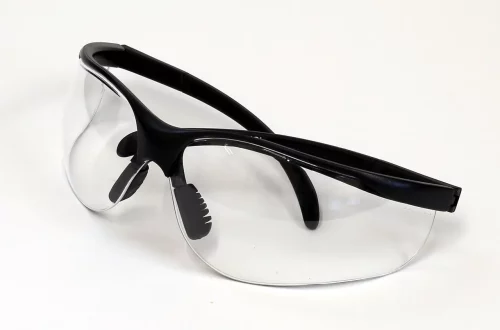
Understanding Equine Bute: Benefits and Considerations for Horse Owners
Understanding the importance of proper care and management for horses is essential for any horse owner. Among the various aspects of equine health, pain management plays a crucial role in ensuring the well-being and performance of these majestic animals. One of the most commonly used medications for alleviating pain and inflammation in horses is phenylbutazone, often referred to as Bute. This non-steroidal anti-inflammatory drug (NSAID) has been widely utilized in equine medicine, appreciated for its effectiveness and relatively quick action.
Horse owners often face the challenge of managing their animals’ comfort, especially when it comes to conditions such as arthritis, colic, or post-surgical recovery. Understanding how Bute works, its benefits, and the considerations that come with its use can help horse owners make informed decisions about their animals’ care. While Bute can significantly improve a horse’s quality of life, it also comes with potential risks and side effects that must be thoughtfully weighed. This article delves into the multifaceted world of equine Bute, providing insights that can aid horse owners in navigating the complexities of equine health management.
What is Phenylbutazone and How Does it Work?
Phenylbutazone, commonly known as Bute, is a non-steroidal anti-inflammatory drug (NSAID) that is frequently prescribed for horses. Its primary function is to reduce inflammation and alleviate pain, making it a valuable tool in the management of various equine conditions. Bute works by inhibiting the production of certain enzymes in the body that contribute to the inflammatory process. Specifically, it blocks the cyclooxygenase (COX) enzymes, which play a key role in the synthesis of prostaglandins—substances that mediate inflammation and pain.
One of the notable characteristics of Bute is its rapid absorption and effectiveness. When administered, it quickly enters the bloodstream, providing relief within hours. This makes it particularly useful for acute conditions that require immediate attention, such as lameness or post-operative pain. Additionally, Bute can be used for chronic conditions like arthritis, where long-term management is necessary.
It is important to note that while Bute is effective, it is not without its limitations. For example, the drug may have varying effects on different horses, and some may experience side effects. Common side effects can include gastrointestinal issues, such as ulcers or colic, especially if used long-term or in higher doses. Therefore, monitoring the horse’s response to Bute is crucial, and any signs of adverse effects should prompt a consultation with a veterinarian.
Furthermore, Bute is not recommended for use in certain situations, such as in horses with pre-existing kidney issues or those that are dehydrated. Thus, understanding the specific health status of the horse is essential before initiating treatment with this medication. Overall, Bute remains a valuable resource in equine medicine, provided that it is used judiciously and under proper veterinary guidance.
Benefits of Using Bute for Horses
The use of Bute in equine care offers several compelling benefits to horse owners and their animals. One of the primary advantages is its ability to provide rapid pain relief. When a horse is experiencing discomfort—whether from an injury, surgery, or chronic condition—Bute can significantly improve its quality of life by alleviating pain and allowing for greater mobility.
Another benefit of Bute is its anti-inflammatory properties. Inflammation is a natural response of the body to injury or illness, but chronic inflammation can lead to further complications and prolonged discomfort. By reducing inflammation, Bute not only helps alleviate pain but also promotes healing, allowing horses to recover more effectively from injuries or surgical procedures.
Additionally, Bute is relatively easy to administer. It is available in various forms, including oral paste, powder, and injectable solutions, making it convenient for horse owners to choose the method that works best for their animal. This flexibility can be particularly advantageous during times of distress when a horse may be reluctant to eat or drink.
Moreover, Bute is cost-effective compared to some other pain management options. For many horse owners, especially those with multiple animals, the affordability of Bute can make a significant difference in their ability to provide necessary care without incurring exorbitant expenses.
However, while the benefits of Bute are considerable, it is essential for horse owners to remain vigilant about the potential risks. Regular communication with a veterinarian can help ensure that the medication is being used safely and effectively, maximizing its benefits while minimizing any adverse effects.
Considerations and Precautions When Using Bute
While Bute can be a highly effective medication for managing pain and inflammation in horses, there are several considerations and precautions that horse owners should keep in mind. First and foremost, it is crucial to consult with a veterinarian before initiating treatment. A veterinarian can evaluate the horse’s medical history, current health status, and any underlying conditions that may influence the use of Bute.
One of the primary concerns with Bute is its potential for gastrointestinal side effects. Long-term use or high doses can lead to the development of ulcers or colic, which can be serious and require immediate veterinary intervention. Therefore, it is advisable to use the lowest effective dose for the shortest duration necessary to manage the horse’s condition.
Additionally, monitoring the horse for any signs of adverse reactions is essential. Owners should be vigilant about changes in behavior, appetite, or signs of discomfort, and report these changes to their veterinarian promptly. This proactive approach can help mitigate the risks associated with Bute and ensure that the horse remains healthy and comfortable.
It is also important to consider the legal and regulatory aspects of using Bute, especially for competition horses. Many equestrian organizations have strict rules regarding the use of medications, including Bute, and violations can lead to disqualification or other penalties. Horse owners should familiarize themselves with these regulations to avoid any complications during events.
Finally, the use of Bute should be part of a comprehensive pain management plan that includes regular veterinary check-ups, appropriate nutrition, and proper exercise. By taking a holistic approach to equine health, horse owners can ensure that their animals receive the best possible care while effectively managing pain and inflammation.
Alternatives to Bute for Equine Pain Management
Although Bute is a popular choice for pain management in horses, there are several alternative options that horse owners may consider. Each alternative comes with its own set of benefits and potential drawbacks, making it essential to evaluate them thoroughly in consultation with a veterinarian.
One alternative is another NSAID, such as flunixin meglumine (Banamine). This medication is also effective for reducing pain and inflammation and is commonly used for conditions like colic and musculoskeletal injuries. Like Bute, it can have side effects, particularly related to gastrointestinal health, but it may be preferable in certain situations, especially for acute pain management.
Another option is the use of corticosteroids. These medications can be effective in reducing inflammation and are sometimes used for more severe cases, such as autoimmune conditions. However, corticosteroids come with their own risks, including potential effects on the horse’s immune system and metabolic processes. Therefore, their use should be carefully monitored by a veterinarian.
In addition to pharmaceutical options, many horse owners are exploring complementary therapies. Acupuncture, chiropractic care, and massage therapy are becoming increasingly popular in the equine community. These holistic approaches can provide pain relief and improve overall well-being without the side effects associated with traditional medications.
Dietary supplements, such as glucosamine and chondroitin sulfate, are also being used to support joint health and reduce pain in horses, particularly those with arthritis. While these supplements can be beneficial, their effectiveness can vary between individual horses, and they should be used as part of a broader management strategy.
Ultimately, the best approach to equine pain management will depend on the specific needs of the horse, the underlying condition being treated, and the guidance of a qualified veterinarian. By considering a range of options, horse owners can create a tailored plan that prioritizes their horse’s health and comfort.
In conclusion, while Bute remains a valuable tool in equine medicine, it is essential to use it responsibly and to consider all available alternatives.
**Disclaimer: This article is not meant to provide medical advice. Always consult a veterinarian for health-related concerns regarding your horse.**




